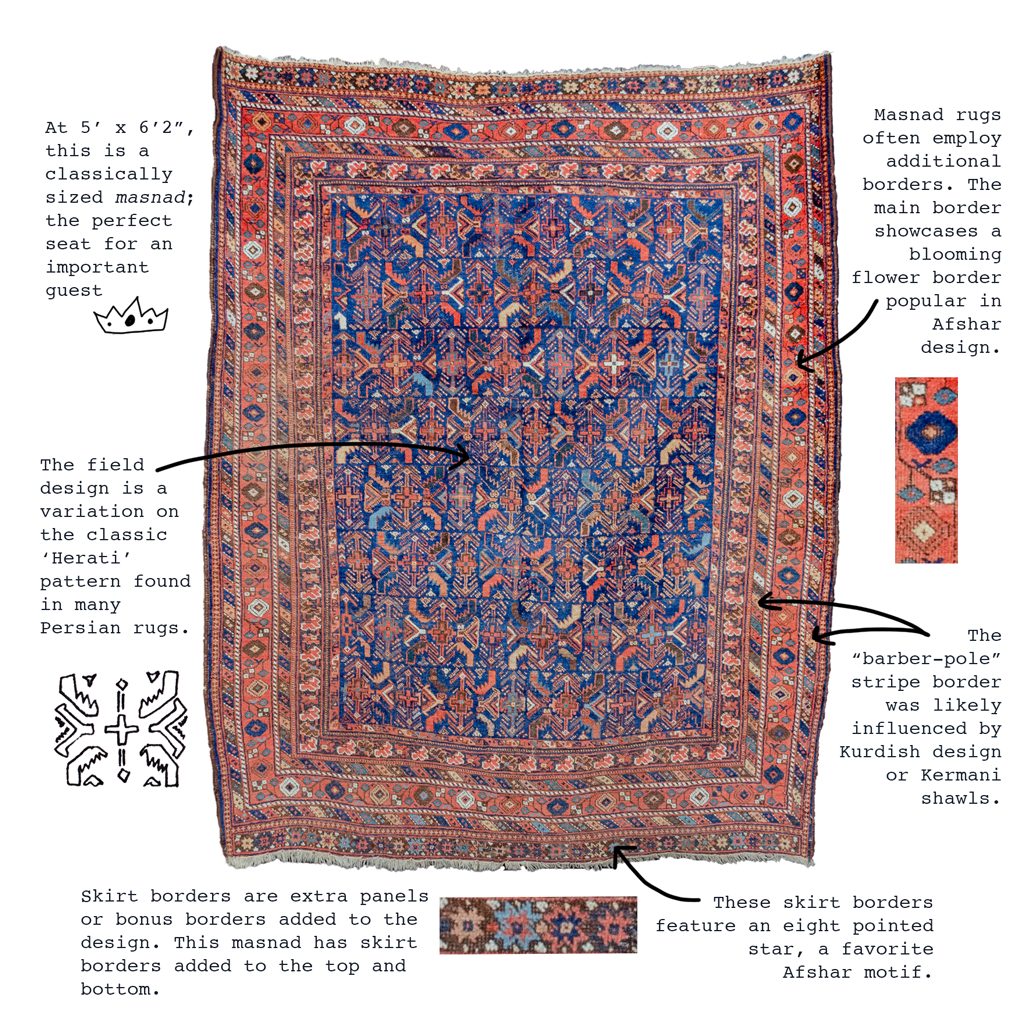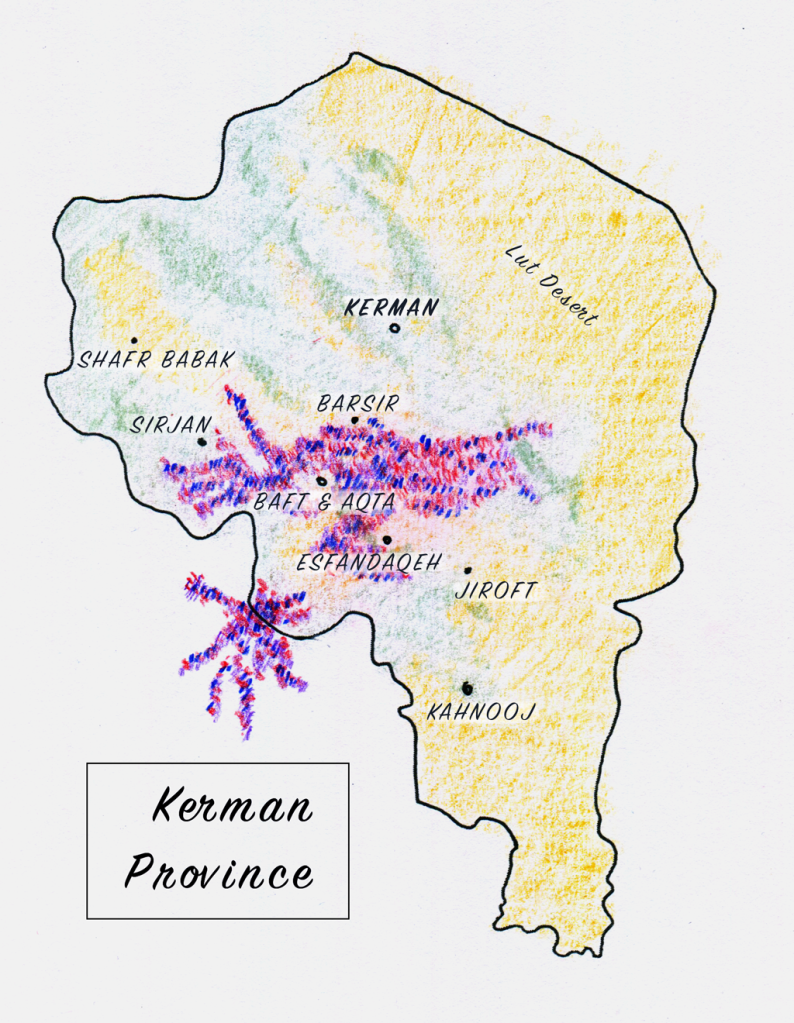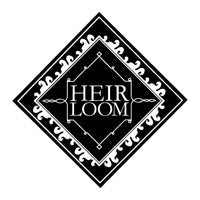


A Special Seat
A masnad rug would be spread on top of another rug as a special seat for the most respected guest upon their visit. The majority of masnads are woven to accommodate one person, although sometimes they would be larger, potentially for a bride & groom. This seating tradition continued until the 19th century.

The Afshar
The Afshar are a Turkic people who migrated from Central Asia to Persia nearly a millennia ago. Over the centuries they became a powerful force in the Persian military. They become so powerful in fact, that they were viewed as a threat and dispersed by some of the later Safavid shahs. The immense range of designs and motifs found in Afshar rugs can be attributed to the tribe’s wide geographic spread. Over the years, they’ve incorporated decorative motifs from their neighbors across the region – everywhere from the Caucasus to Kurdish and Baluchi villages and even city workshops.

During the early 16th century Shah Tahmasp moved a large contingent of Afshar to the province of Kerman. There they would become one of the most dominant forces in government and trade until the early 20th century when Reza Shah would temper tribal power throughout the dominion and forcibly settle many nomads in 1925. This power and influence manifested itself in a large volume of Afshar rug production in the area relative to other regions. Many Afshar have settled but some still maintain nomadic and semi-nomadic lifestyles to this day.

We sourced much of our information from a recent addition to our shop library; Afshar: Tribal Weaves from SouthEast Persia by Parviz Tanavoli. We also discussed with friends and fellow dealers and reviewed the archives of Hali Magazine.

*above maps illustrated by Lynn Hunter & inspired by maps included in Parviz Ranavoli’s AFSHAR Tribal Weaves from Southeast Persia

